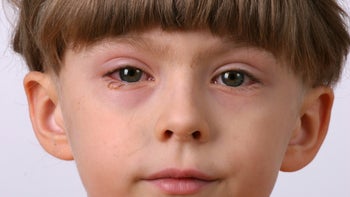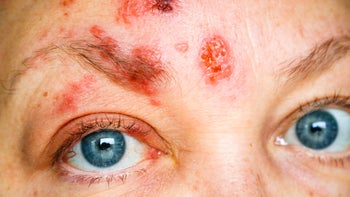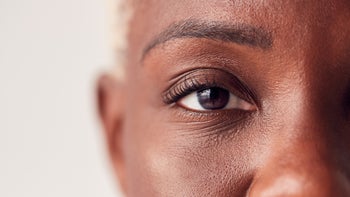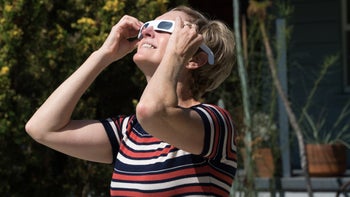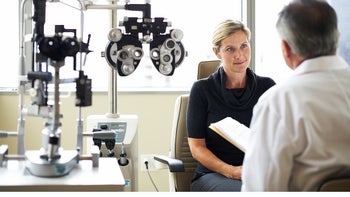
Treating Keratitis: A Guide to Symptoms, Types, and Healing
Key takeaways:
Keratitis is an inflammation of the cornea, a clear layer of your eye. Keratitis causes eye redness and pain, and it’s more common in people who wear contact lenses.
Infections and certain autoimmune conditions can cause keratitis.
Without treatment, keratitis can lead to eye scarring and vision loss. So it’s best to see your eye doctor right away if you have symptoms.

Many people experience episodes of eye redness and pain. It can be hard to tell if these symptoms are something simple, like allergies, or a sign of something more serious.
If you have certain medical conditions or wear contact lenses, eye pain and redness can be a sign of keratitis — a more serious eye condition.
People with keratitis need treatment to prevent vision loss. If you could be at risk for keratitis, here’s everything you need to know about the condition.
Be prepared with Prolensa
Prolensa treats inflammation and reduces eye pain in patients after cataract surgery. Uninsured patients may pay as little as $80 copay for up to a 60-day supply.

What is keratitis?
Keratitis is an inflammation of the cornea. The cornea is the clear layer of the eye that covers your iris (colored part of the eye) and pupil. Your cornea helps focus light so that you can see clearly.
Keratitis is common. One study estimated that there are a million office or emergency room visits each year for keratitis.
What are the symptoms of keratitis?
Symptoms of keratitis include:
Eye pain
Sensation that something is stuck in your eye
Light sensitivity (photophobia)
Tearing
Blurry vision
Eye discharge
Trouble keeping your eye open
If you have mild inflammation, you may feel eye irritation instead of eye pain.
What causes keratitis?
Causes of keratitis fit into two general categories: infectious and noninfectious causes.
1. Infectious keratitis
Bacteria, viruses, fungi, and even parasites (like Acanthamoeba keratitis) can infect the cornea. In the U.S., bacteria and viruses are the most common causes of keratitis.
People who wear contact lenses are more likely to develop bacterial keratitis. Bacteria can grow on contact lenses when you don’t store or clean them correctly. Bacteria can also start to grow on contact lenses if you wear them too long. And Acanthamoeba can grow on contact lenses if you wear them in water.
Washing your hands and properly storing and cleaning your contact lenses can decrease the risk of developing bacterial keratitis. Also try not to sleep in your contacts lenses or wear them while swimming or in hot tubs.
Herpes viruses can cause keratitis. If you have a cold sore or shingles, try not to touch your eyes to avoid developing herpes keratitis. Sometimes common cold viruses can also cause keratitis. If you’re sick, avoid touching your eyes so you don’t spread the infection to your cornea.
2. Noninfectious keratitis
Besides infections, other things that can lead to keratitis include:
Autoimmune conditions: People with certain autoimmune conditions are at higher risk of developing keratitis. That’s because their immune system can attack the cornea. These conditions include systemic lupus erythematosus, Sjorgen’s syndrome, rheumatoid arthritis, Wegener’s granulomatosis, and polyarteritis nodosa.
Eye conditions: Eye conditions that cause the cornea to become overly dry can lead to keratitis. Without enough tears, the cornea can get injured and inflamed. Severe dry eye and incomplete eyelid closure can lead to keratitis.
Eye injury: Eye injuries from trauma to the cornea, like large corneal abrasions, can lead to keratitis. UV light damage can also cause keratitis. The cause of this damage can be the reflection of UV light by sand, water, ice, or snow. It’s a good idea to use appropriate eyewear during activities that put you at risk for eye injuries or UV light exposure.
Keratitis can be very serious if you don’t treat it immediately. It can scar the cornea, which can cause vision loss.
Are keratitis and conjunctivitis the same condition?
Keratitis and conjunctivitis are not the same condition. Conjunctivitis and keratitis share some symptoms so it can be hard to tell them apart.
Conjunctivitis is inflammation of the conjunctiva, which is the white part of the eye (keratitis affects the cornea). “Pink eye” is another name for conjunctivitis.
Many things that cause conjunctivitis also cause keratitis. So it’s possible to have both conditions at the same time. Since it can be hard to tell them apart, it’s best to see an eye doctor to make sure you don’t have keratitis.
What’s the treatment for keratitis?
Treatment for keratitis depends on the specific cause of the inflammation. Some treatments include:
Artificial tears
Eye rest
Steroid eye drops
Antibacterial, antifungal, or antiviral eye drops
Antibiotics, antiviral, or antifungal medications
Your eye doctor may also ask you to stop wearing contact lenses until the keratitis is better.
Early treatment can prevent problems like corneal scarring, which can permanently affect vision. So it’s important to seek care right away if you think you might have keratitis.
People who have more advanced keratitis (like from Acanthamoeba keratitis) — or do not respond well to treatment — may need a corneal transplant.
Can keratitis heal on its own?
Keratitis usually doesn’t heal on its own. If you have symptoms of keratitis, and especially if you wear contact lenses, you should see an eye doctor right away.
The bottom line
Keratitis is a common cause of a red eye and eye pain. It’s an inflammation of the cornea that can lead to corneal scarring and vision loss. People who wear contact lenses are more likely to develop keratitis. If you have symptoms of keratitis, it’s important to see an eye doctor right away — early treatment can save your vision.
Why trust our experts?


References
American Optometric Association. (n.d.). Keratitis.
Centers for Disease Control and Prevention. (2010). Acanthamoeba keratitis FAQs.
Centers for Disease Control and Prevention. (2022). Basics of bacterial keratitis.
Collier, S. A., et al. (2014). Estimated burden of keratitis--United States, 2010. MMWR: Morbidity and Mortality Weekly Report.
Gottsch, J. D. (2007). Autoimmune keratitis. Uveitis and Immunological Disorders.
National Eye Institute. (2019). Corneal conditions.
Prevent Blindness. (n.d.). Eye disease & conditions: Keratitis.
Singh, P., et al. (2022). Keratitis. StatPearls.


